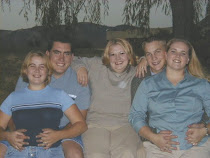As the temperature rises, so does the cost of cooling your home, especially if you use an air conditioner. Obviously, the best way to keep your home cool during the summer is to use an air conditioner to keep the temperature down, but there are other options that don’t raise your energy bill quite significantly. The idea is to minimize sources of heat and remove built-up heat from inside.
Fans and Ceiling Fans
if you’re looking for ways to beat the heat, a ceiling fan can be a great investment for your home. This one appliance can make a room feel 6 or 7 degrees cooler, and even the most power-hungry fan costs less than $10 a month to use if you keep it on for 12 hours a day. Good fans make it possible for you to raise your thermostat setting and save on air-conditioning costs. Fans don’t use much energy, but when air is circulating, it feels much cooler. Ceiling fans are best, but a good portable fan can be very effective as well.
You should remember that even mild air movement of 1 mph can make you feel three or four degrees cooler. Also make sure your ceiling fan is turned for summer - you should feel the air blown downward.
You should remember that even mild air movement of 1 mph can make you feel three or four degrees cooler. Also make sure your ceiling fan is turned for summer - you should feel the air blown downward.
Shades, drapes, or blinds
Install white window shades, drapes, or blinds to reflect heat away from the house. Close blinds, shades and draperies facing the sun (east-facing windows in the morning and west-facing windows in the afternoon) to keep the sun’s heat out and help fans or air conditioners cool more efficiently. Always remember that the best way to keep your home cool is to keep the heat out.
Humidity makes room air feel warmer, so reduce indoor humidity. Minimize mid-day washing and drying clothes, showering, and cooking. And when you must do these things, turn on ventilating fans to help extract warm, moist air.
Install white window shades, drapes, or blinds to reflect heat away from the house. Close blinds, shades and draperies facing the sun (east-facing windows in the morning and west-facing windows in the afternoon) to keep the sun’s heat out and help fans or air conditioners cool more efficiently. Always remember that the best way to keep your home cool is to keep the heat out.
Internal Heat
The most common sources of internal heat gain are; appliances, electronic devices, and lighting. Be aware from where the heat is comming. Now if you have air conditioning, use it wisely. Don’t put lamps, televisions or other heat-generating appliances next to your air-conditioning thermostat, because the heat from these appliances will cause the air conditioner to run longer. The heat they produce will make it think your house is warmer than it really is, and your system will run harder than it needs to.
Unless you absolutely need them, turn off incandescent lights and heat-generating appliances. Replace incandescent bulbs with compact fluorescents; they produce the same light but use a fifth the energy and heat.
Unless you absolutely need them, turn off incandescent lights and heat-generating appliances. Replace incandescent bulbs with compact fluorescents; they produce the same light but use a fifth the energy and heat.
You should also try to avoid heat-generating activities, such as cooking, on hot days or during the hottest part of the day. If you are cooking, use your range fan to vent the hot air out of your house. By reducing the amount of heat in your home, you will have to use less energy to cool it.
Humidity makes room air feel warmer, so reduce indoor humidity. Minimize mid-day washing and drying clothes, showering, and cooking. And when you must do these things, turn on ventilating fans to help extract warm, moist air.
Avoid landscaping with lots of unshaded rock, cement, or asphalt on the south or west sides because it increases the temperature around the house and radiates heat to the house after the sun has set.
If the attic isn’t already insulated or is under-insulated, insulate it NOW. Upgrading from 3 inches to 12 inches can cut cooling costs by 10 percent.






Wednesday, May 20, 2009 4:57:00 AM
Nice tips Grammee. I love staying cool more than being hot.
Wednesday, May 20, 2009 6:57:00 AM
Great tips as usual. Thanks for sharing Gramee!!
Thursday, May 21, 2009 2:21:00 PM
Great tips!
Thursday, May 21, 2009 2:34:00 PM
Hey come on over and check out my new book giveaway blog :)
Friday, May 22, 2009 4:07:00 AM
Thanks for sharing these tips! I especially like the one that gives me permission "to avoid heat-generating activities, such as cooking" -- Thank YOU! :)